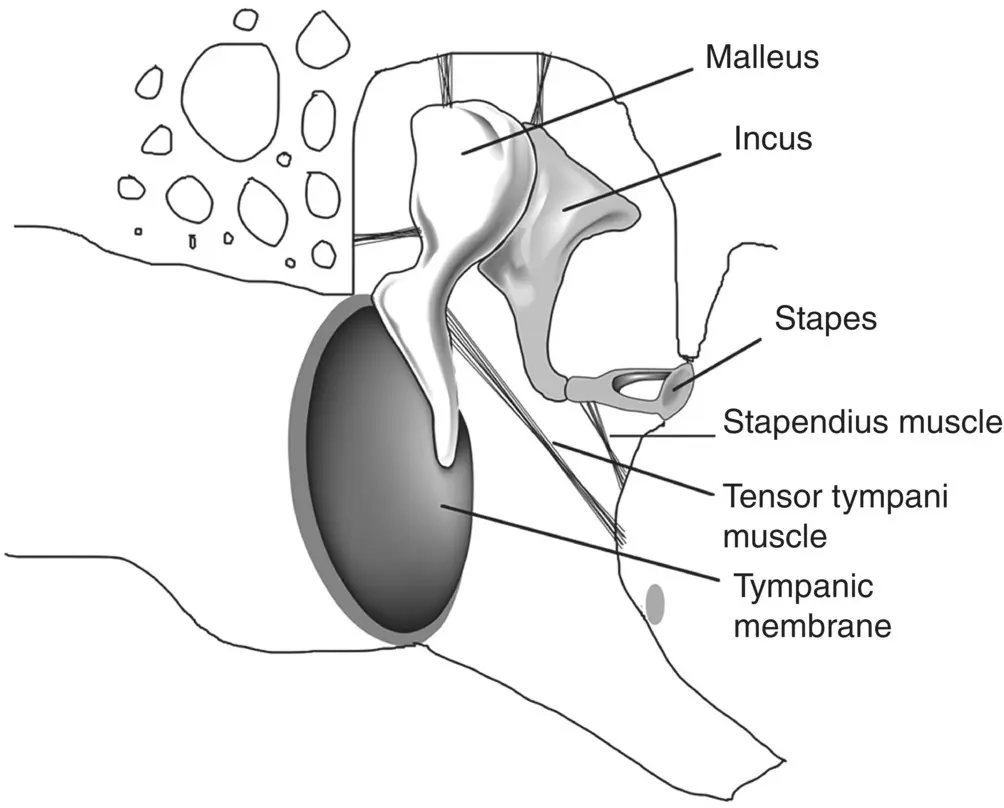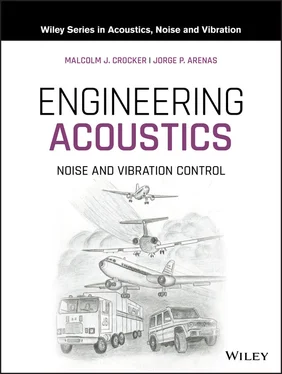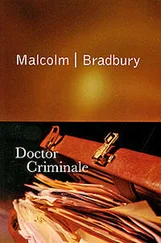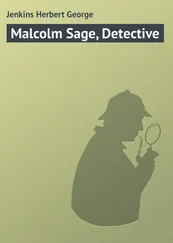6 6 Pierce, A.D. (1981). Acoustics: An Introduction to Its Physical Principles and Applications. New York: McGraw‐Hill (reprinted by the Acoustical Society of America, 1989).
7 7 Crocker, M.J. and Kessler, F.M. (1982). Noise and Noise Control, vol. II. Boca Raton, FL: CRC Press.
8 8 Morse, P.M. and Ingard, K.U. (1986). Theoretical Acoustics. Princeton, NJ: Princeton University Press.
9 9 Junger, M.J. and Feit, D. (1986). Sound, Structures, and Their Interaction. Cambridge, MA: MIT Press.
10 10 Beranek, L.L. (1986). Acoustics. New York: Acoustical Society of America (reprinted with changes).
11 11 Beranek, L.L. (1988). Acoustical Measurements, rev. ed. New York: Acoustical Society of America.
12 12 Crighton, D.G., Dowling, A.P., Ffowcs Williams, J.E. et al. (1992). Modern Methods in Analytical Acoustics. Berlin: Springer‐Verlag.
13 13 Fahy, F.J. (1995). Sound Intensity, 2e. London: E&FN Spon, Chapman & Hall.
14 14 Fahy, F.J. and Walker, J.G. (eds.) (1998). Fundamentals of Noise and Vibration. London and New York: E/FN Spon.
15 15 Filippi, P., Habault, D., Lefebvre, J., and Bergassoli, A. (1999). Acoustics: Basic Physics Theory & Methods. San Diego, CA: Academic Press.
16 16 Kinsler, L.E., Frey, A.R., Coppens, A.B., and Sanders, J.V. (1999). Fundamentals of Acoustics, 4e. New York: Wiley.
17 17 Blackstock, D.T. (2000). Fundamental of Physical Acoustics. New York: Wiley.
18 18 Bruneau, M. and Scelo, T. (2006). Fundamentals of Acoustics. London: ISTE.
19 19 Crocker, M.J. (1997). Encyclopedia of Acoustics. New York: Wiley.
20 20 Fuller, C. (2007). Active vibration control. In: Handbook of Noise and Vibration Control (ed. M.J. Crocker), 770–784. New York: Wiley.
21 21 Nelson, P.A. (2007). Sound sources. In: Handbook of Noise and Vibration Control (ed. M.J. Crocker), 43–51. New York: Wiley.
22 22 Jacobsen, F. (2007). Sound intensity measurements. In: Handbook of Noise and Vibration Control (ed. M.J. Crocker), 534–548. New York: Wiley.
23 23 Kuttruff, K.H. (2007). Sound propagation in rooms. In: Handbook of Noise and Vibration Control (ed. M.J. Crocker), 52–68. New York: Wiley.
24 24 Hansen, C.H. (2007). Room acoustics. In: Handbook of Noise and Vibration Control (ed. M.J. Crocker), 1240–1246. New York: Wiley.
25 25 Manning, J.E. (2007). Statistical energy analysis. In: Handbook of Noise and Vibration Control (ed. M.J. Crocker), 241–254. New York: Wiley.
26 26 Hansen, C.H. (2007). Sound absorption in rooms. In: Handbook of Noise and Vibration Control (ed. M.J. Crocker), 1247–1256. New York: Wiley.
27 27 Guyader, J.‐L. (2007). Sound radiation from structures and their response to sound. In: Handbook of Noise and Vibration Control (ed. M.J. Crocker), 79–100. New York: Wiley.
28 28 Ver, I.L. and Holmer, C.I. (1971). Interaction of sound waves with solid structures. In: Noise and Vibration Control (ed. L.L. Beranek), 270–361. New York: McGraw‐Hill.
29 29 Pierri, R.A. (1977) Study of a dynamic absorber for reducing the vibration and noise radiation of plate‐like structures. MSc thesis. University of Southampton.
30 30 Braun, S.G., Ewins, D.J., and Rao, S.S. (2001). Encyclopedia of Vibration. San Diego, CA: Academic.
31 31 Fahy, F.J. and Gardonio, P. (2007). Sound and Structural Vibration – Radiation, Transmission and Response, 2e. Oxford: Academic Press.
32 32 Bies, D.A. and Hansen, C.H. (2009). Engineering Noise Control – Theory and Practice, 4e. London and New York: Spon Press.
33 33 Fahy, F.J. (2001). Foundations of Engineering Acoustics. San Diego, CA: Academic Press.
34 34 Attenborough, K. (2007). Sound propagation in the atmosphere. In: Handbook of Noise and Vibration Control (ed. M.J. Crocker), 67–78. New York: Wiley.
35 35 Astley, R.J. (2007). Numerical acoustical modeling (finite element modeling). In: Handbook of Noise and Vibration Control (ed. M.J. Crocker), 101–115. New York: Wiley.
36 36 Herrin, D.W., Wu, T.W., and Seybert, A.F. (2007). Boundary element modeling. In: Handbook of Noise and Vibration Control (ed. M.J. Crocker), 116–127. New York: Wiley.
4 Human Hearing, Speech and Psychoacoustics
4.1 Introduction
The human ear is a marvelous and very sensitive biomechanical system for detecting sound. If it were only slightly more sensitive, we would be able to hear the Brownian (random) motion of the air molecules and we would have a perpetual buzz in our ears! The ear has a wide frequency response from about 15 or 20 Hz to about 20 kHz. Also, the ear has a large dynamic range; the ratio of the loudest sound pressure we can tolerate to the faintest we can hear is about 10 million (10 7). There are three essential reasons to consider the ear in this book. Sound pressure levels are now so high in industrialized societies that many individuals are exposed to intense noise and permanent damage results. Large numbers of other individuals are exposed to noise from aircraft, surface traffic, construction equipment or machines and appliances, and disturbance and annoyance results. Lastly there are subjective reasons. An understanding of people's subjective response to noise allows environmentalists and engineers to reduce noise in more effective ways. The human auditory response to sound concerns the science called psychoacoustics. For example, noise should be reduced in the frequency range in which the ear is most sensitive. Noise reduction should be by a magnitude which is subjectively significant. There are several other subjective parameters which are important in hearing.
4.2 Construction of Ear and Its Working
The ear can be divided into three main parts ( Figure 4.1): the outer , middle , and inner ear. The outer ear consisting of the fleshy pinna and ear canal conducts the sound waves onto the eardrum. The middle ear converts the sound waves into mechanical motion of the auditory ossicles, and the inner ear converts the mechanical motion into neural impulses which travel along the auditory nerves to the brain. The anatomy and functioning of the ear are described more completely in various other references and textbooks [1–8] and will only be discussed briefly here.

Figure 4.1 Simplified cross‐section through the human ear.
4.2.1 Construction of the Ear
The fleshy appendage on the side of the head (the pinna) is not as well developed in humans as in some animals. Its function is to focus sound into the ear canal. It helps us to localize the source of sound, particularly in the vertical direction, and is more effective at higher frequencies. The ear canal is about 25 mm long and ends at the tympanic membrane (eardrum) which is under tension and has the thickness of at sheet of paper.
The eardrum is connected to the malleus, the first of the three small bones known as the auditory ossicles (see Figure 4.2). The middle ear air cavity is connected to the back of the mouth by the Eustachian tube. The smallest of the ossicles, the stapes, which is about half the size of a grain of rice and the smallest bone in the human body, is connected to a small oval window in the cochlea. The cochlea consists of spiral fluid‐filled cavities inside the bone of the skull. The cochlea is comprised of a passageway which makes two and one half turns rather like a snail shell. Connected to the cochlea are the semicircular canals which are the balance mechanism and unrelated to hearing.

Figure 4.2 Tympanic membrane (eardrum) and three auditory ossicles.
Читать дальше














